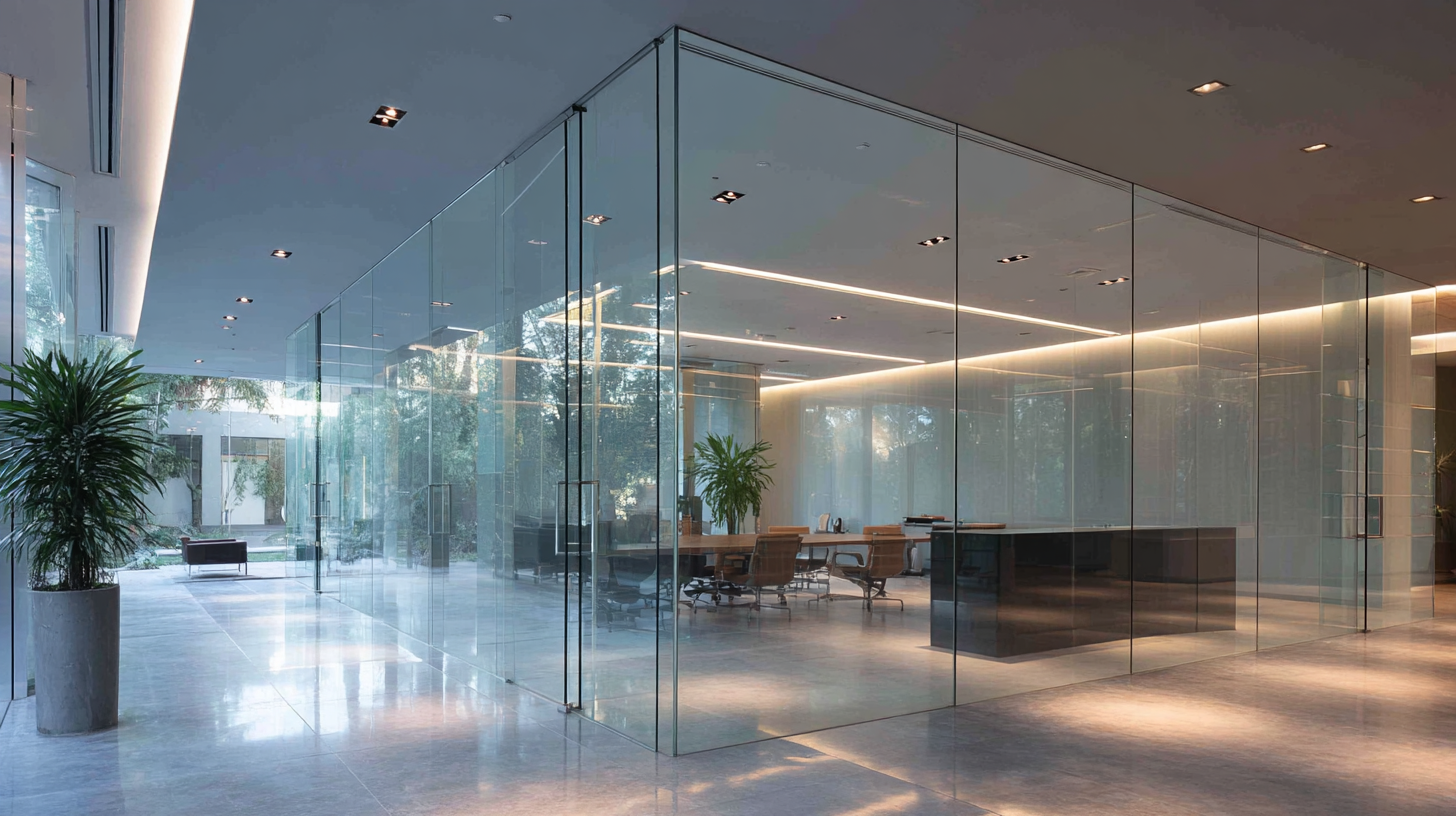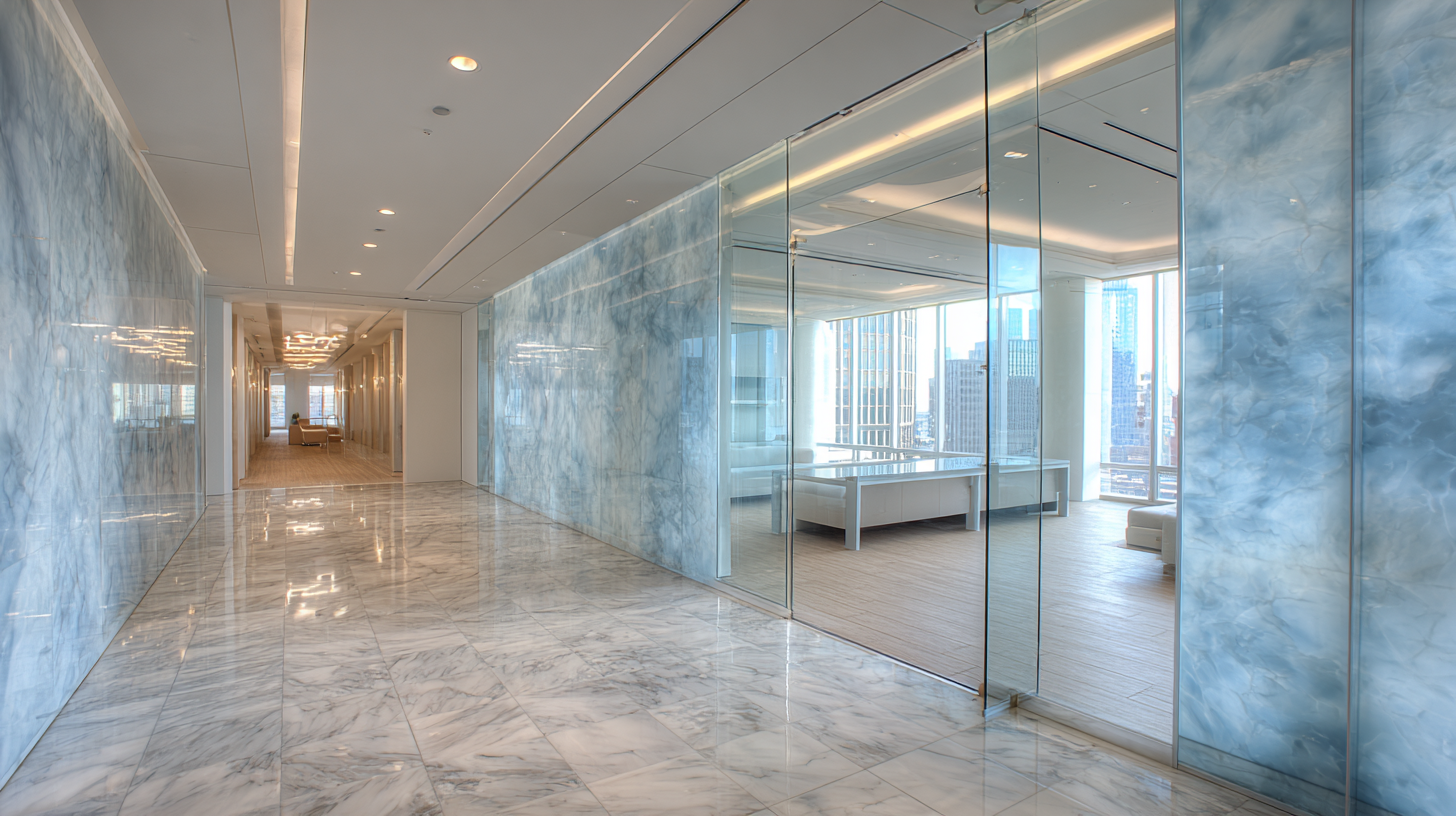Transform Your Space: Innovative Ways to Incorporate Hinge Glass in Modern Architecture
In today's architectural landscape, the integration of innovative materials is essential for creating functional yet aesthetically pleasing spaces. One such material that has garnered attention in modern design is Hinge Glass. This versatile product not only offers a contemporary aesthetic but also provides unique functional benefits that enhance the usability of both residential and commercial structures. By seamlessly blending indoor and outdoor environments, Hinge Glass allows for an abundance of natural light while maintaining privacy and security.

In this article, we will explore various innovative approaches to incorporating Hinge Glass into modern architecture, examining its transformative potential in reimagining spaces. From biophilic designs to minimalist frameworks, Hinge Glass emerges as a pivotal element in redefining the boundaries of architectural creativity. Join us as we delve into the captivating ways Hinge Glass can revolutionize your surroundings, inspiring a fresh perspective on modern living and working environments.
Creative Applications of Hinge Glass in Residential Interiors
Hinge glass is rapidly transforming residential interiors, providing a unique blend of functionality and aesthetics. According to the "Architectural Glass Market Report 2022", the demand for innovative glass solutions, including hinge glass, has surged by over 30% in the last five years. This trend is attributed to the growing desire for open and adaptable living spaces.
 Hinge glass allows for seamlessly integrated indoor-outdoor transitions, making spaces feel larger and more connected to nature.
Hinge glass allows for seamlessly integrated indoor-outdoor transitions, making spaces feel larger and more connected to nature.
Creative applications of hinge glass go beyond traditional doors and windows. For instance, flexible room dividers made of hinge glass can reconfigure spaces without compromising on light or visibility. A recent study by the Glass Association found that homes incorporating such designs not only enhance the visual appeal but also increase property value by an average of 15%.
Consider using hinge glass installations in home offices, where natural light can boost productivity, or in kitchens and living areas to create a harmonious flow. This innovative material not only enhances the architectural beauty but also supports a dynamic lifestyle, reflecting modern living's emphasis on versatility and openness.
Integrating Hinge Glass for Seamless Indoor-Outdoor Living Spaces
In modern architecture, the integration of hinge glass features creates a seamless transition between indoor and outdoor spaces, enhancing the living experience. This innovative design solution not only optimizes natural light but also encourages a fluid connection with nature, inviting the outdoors in. Architects are increasingly adopting hinge glass installations, such as pass-through windows and moving terrace designs, which facilitate effortless access to gardens, patios, and balconies, thereby redefining traditional boundaries.
As the popularity of indoor-outdoor living spaces continues to rise, manufacturers are responding by developing advanced glazing options that prioritize both aesthetics and functionality. The demand for versatile, stylish glass solutions is projected to grow significantly in the coming years, with market forecasts indicating a robust expansion. This trend highlights the evolution of residential spaces, where glass structures transform simple rooms into vibrant, interconnected environments that celebrate the beauty of outdoor living while maintaining the comforts of home.
Transform Your Space: Hinge Glass Installation Trends
This chart illustrates the growth of hinge glass installations in million square feet from the year 2018 to 2022. Its increasing trend reflects the rising popularity of innovative architectural designs that integrate hinge glass for seamless indoor-outdoor living spaces.
Maximizing Natural Light: Hinge Glass Solutions for Modern Offices
In recent years, the importance of natural light in office environments has gained significant recognition, leading to innovative architectural solutions like hinge glass. Research by the American Society of Interior Designers indicates that access to natural light can enhance employee productivity by up to 15% and reduce eye strain, ultimately fostering a healthier work atmosphere. Hinge glass, with its ability to seamlessly blend interior spaces with the outdoors, allows architects to maximize daylight penetration while providing flexibility in spatial configurations.
Moreover, a study conducted by the International Facility Management Association reveals that workplaces flooded with natural light experience a 20% improvement in mood and overall well-being among employees. By incorporating hinge glass in modern offices, companies can create dynamic, open environments that not only capitalize on natural light but also improve employee collaboration and creativity. This approach not only satisfies the aesthetic needs of contemporary architecture but also aligns with sustainability goals, making it a wise investment for forward-thinking businesses aiming to enhance their workspace.
Innovative Hinge Glass Designs for Commercial Facades
Incorporating hinge glass into commercial facades has become a game-changer in modern architecture, enabling businesses to create bold statements while maximizing functionality and aesthetics. Innovative designs featuring hinge glass not only enhance the visual appeal of a building but also improve energy efficiency and natural light flow. This versatile material can transform traditional façades by introducing dynamic movement and interactive elements, allowing for seamless connections between indoor and outdoor spaces.
Tips: When designing with hinge glass, consider the orientation of the building to optimize sunlight exposure. Incorporate automated systems that allow the glass to pivot and fold, adapting the space to different weather conditions and functions throughout the day. Additionally, exploring different frame materials can enhance the durability and design impact of the hinge glass installation.
With hinge glass, architects can also experiment with various shapes and sizes to create unique visual narratives. Incorporating colorful tints or patterned glass can further elevate the facade's appeal, making it a striking landmark in any urban environment. By prioritizing innovation in design, businesses can not only attract attention but also promote a sustainable and inviting atmosphere for employees and customers alike.

Enhancing Privacy and Aesthetics with Hinge Glass Partitions
Hinge glass partitions have emerged as a pivotal element in modern architecture, effectively balancing the needs for both privacy and aesthetic appeal. According to a report by Grand View Research, the global demand for glass partitions is expected to reach $4.4 billion by 2025, reflecting a growing trend towards versatile, space-saving solutions. Hinge glass allows for seamless transitions between different areas while maintaining visual connectivity, making spaces feel larger and more inviting.
In terms of privacy, hinge glass offers customizable solutions that can be adapted to various settings, whether in corporate offices or residential spaces. A survey conducted by the American Society of Interior Designers highlights that 70% of designers believe that incorporating flexible partitions enhances functionality and comfort in work environments. This functionality is particularly crucial in open office designs, where the need for private areas is countered by the desire for inclusive spaces. By utilizing hinge glass partitions, architects and designers can create environments that promote collaboration while providing necessary seclusion when needed, thus enhancing overall workspace efficiency.

Home
Products
About Us
Solutions
Our Service
Blog
Contact Us

 Hinge glass allows for seamlessly integrated indoor-outdoor transitions, making spaces feel larger and more connected to nature.
Hinge glass allows for seamlessly integrated indoor-outdoor transitions, making spaces feel larger and more connected to nature.
